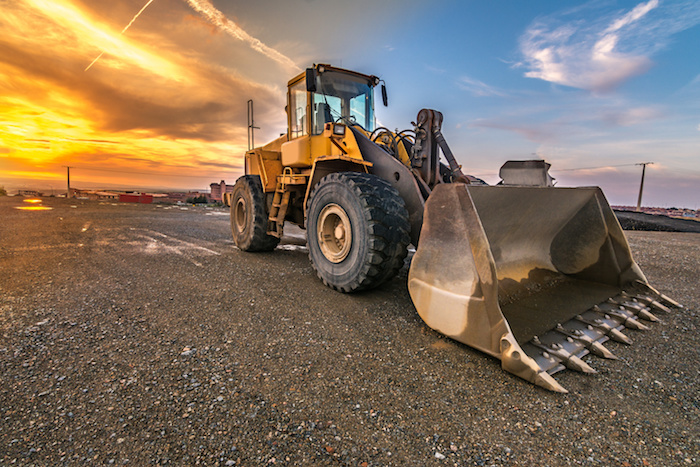
With so much heavy equipment in the construction industry, it’s normal to get confused about their uses. Some equipment is for large-scale operations, and others are for smaller projects.
Building and construction, whether it’s for structures or roads, requires multiple types of heavy equipment. Those can be utilized for operations such as excavating, transferring construction materials, hauling, grading, dozing, and digging large quantities of soil. Here are some of the kinds of equipment you may need on the job site:
1) Excavator
You can use an excavator for lifting heavy amounts of soil. An excavator’s main parts are its arms, rotating cab, bucket, and movable tracks. They have powerful digging capability and make the equipment mobile. Thus, the excavator can perform many functions, including making holes, plowing trenches, and burrowing mines.
Excavators are used not only for construction purposes but also for industrial needs. Some examples are road and building construction, mining, and demolitions.
Depending on the type of operation, you can use various types of excavators based on their size and function. Small excavators like SCE excavators are typically used to dig and drill smaller trenches. Larger excavators, on the contrary, are used for more heavy-duty projects.
2) Bulldozer Or Dozer
These are variations of heavy equipment used in construction known for the enormous blades located in the front. Dozers are one of the sturdiest and most solid kinds of heavy equipment.
There are dozers that come mounted on wheels, and some are track-mounted. You can use either of them depending on your specific need, but the latter is the most common type. If you’re looking to save some money, you can go for secondhand options such as SmartCast used equipment instead.
You can use the dozer’s front metal blade for various tasks, such as condensing materials, pushing, carrying, and loosening substances. Also, bulldozers are good for transporting vast quantities of material.
3) Backhoe
The backhoe is among the most iconic construction equipment ever invented. In essence, its name comes from the movement of the bucket attached to the machine. In contrast to a bulldozer that pushes materials forward, a backhoe pulls dirt backward in the direction of the machine to scoop it up, hence the term ‘backhoe.’
The backhoe and the front loader are attached to a control cabin where you can adjust the heavy equipment’s speed, movement, and direction.
You can use a backhoe as a heavy digger to dig out holes and transport materials onto a piece of loading equipment. Since it also comes with a loader at the front, you can use it in multiple ways. These include pushing, digging, and loading sand, gravel, or other materials.
4) Grader
A grader’s primary purpose is to maneuver soil or gravel to create a foundational surface. However, it doesn’t smoothen the surface—it simply spreads out the soil evenly. As such, it uses a piece of equipment called an edge to push the soil.
Graders are some of the longest heavy equipment any construction firm could purchase. This is because ample space under the cabin and in the middle of both wheels is required for the edge to function and be maneuvered. Additionally, the edge located below the cabin is movable based on the direction you need the soil to run. While you can raise the edge based on the desired surface thickness, you can also push excess soil from the project area.
Some projects use graders to clear the surface area of rubble and gravel, thus paving the way for heavier rollers to smoothen it.
5) Concrete Mixer
Although you can mix concrete by hand using a shovel, bigger projects require the use of a concrete mixer to handle that same task in order to save time and money. With it, you can speed up the process of mixing large quantities of concrete.
This type of heavy equipment has a drum into which construction workers can pour concrete and slowly add water. The drum is attached to a machine that makes it spin to mix the materials inside efficiently.
There are also concrete mixer trucks for more extensive projects. Generally, these trucks use the same principle as a regular concrete mixer. However, the drum is far bigger and attached to a truck, so the concrete inside can be transported with ease.
Conclusion
If you plan to run a construction company, owning these pieces of heavy equipment will ensure that you can deliver efficient and quality services. This is because their primary purpose is to take on difficult tasks involved in large projects while reducing risk to construction workers. So long as trained and licensed workers operate these machines, you don’t have to worry about the safety of everyone else in the working area.
